
Background information
TV teardown: «Huh? Just plain old LED strips?»
by Luca Fontana
How do I calculate the ideal seat distance? A simple question with a thousand answers that depend on who you ask. That makes me wonder. Who determines that anyway, and on the basis of what?
If a simple question has a complicated answer, it's the search for the ideal seating distance.
This must have started back in the 1930s, when televisions began to conquer the world. I always imagine someone asking how far they should sit from their TV set. Someone must have then determined how to calculate the ideal sitting distance for optimum viewing pleasure based on some set of facts - like wrist times pi.
Many decades have passed since the early days of the television. Picture technology has developed massively, especially in the last ten years. Ultra HD televisions are currently spreading, but 8K/UHD 2 televisions are lurking on the horizon. The question of the ideal viewing distance has become more topical and complex than ever. And it demands an answer.
But the truth is: it's a science - or rather a religion - in itself.
In my search for the TV guru god who tells me where to sit in front of my telly, I quickly come across the minimum seating distance. This is not the same as the optimum seating distance.
The minimum viewing distance indicates how close you can sit to your TV without being able to distinguish individual pixels from one another. Pixels are light-emitting diodes that generate the TV picture. The ideal viewing distance depends on two things:
The pixel density indicates how many pixels there are on the line of an inch, also known as points per inch (ppi). The higher the density, the more difficult it is for the eye to distinguish the pixels from one another.
An example: The resolution of a UHD television is 3840×2160 pixels, so the total number of pixels is 8,294,400 pixels (3840 x 2160). In order for the pixels to fill the screen area of a 65-inch television, they must be larger than on a smaller 55-inch television. This means that the larger television has fewer pixels per inch. Ergo: The pixel density of the 65-inch set is lower than that of the 55-inch set.
The resolution, on the other hand, describes the extent to which the human eye is able to distinguish the finest structures from one another. Or more simply: at what point is the distance between two pixels so small that the eye can no longer distinguish between them and instead sees a single pixel?
All this theory leads to three formulas:
The minimum seating distance is calculated using the size of an inch in millimetres - i.e. 25.4 mm - the pixel density and the minimum dot pitch. I calculated this using the example of a 65-inch UHD TV. To do this, I first had to calculate the pixel density. For the pixel density, I again needed the picture width in inches (see formulas above).
You can see that the minimum viewing distance for a 65-inch UHD TV is 1.25 metres. This means that you start to perceive the individual pixels as such from this distance and should therefore never sit closer to the TV. At least in theory. In practice, this can vary from person to person, depending on their visual acuity.
However, only very few people are likely to sit that close to the screen. Therefore, the minimum seating distance is not the same as the ideal seating distance.
What exactly is the ideal seat pitch? In contrast to the minimum seat pitch, it's the distance to the TV that gives you the best possible cinema experience: The more of your field of vision is covered by the TV, the better. Incidentally, the binocular field of vision of an adult is around 214 degrees.
On the other hand, don't sit too close: You don't want to get a neck twist every time the felt ball whizzes back and forth between the two edges of the picture. In other words: Yep, actually as close as possible, but only to the point where it makes sense.
But where is that point?
The viewer in front of the TV forms the apex of an isosceles triangle. Two straight lines connect his head and the edges of the TV. The closer the TV, the wider the triangle and the greater the viewing angle. The direct connection between the viewer and the TV is the seating distance.
In the trade, a seating distance at which an Ultra HD TV fills around 30 degrees of the field of view is considered ideal. I've worked out how to get from this angle to the ideal seating distance.
Formulas:
Calculation:
The factor x is the value by which you can multiply the screen diagonal in cm of your TV to arrive at the ideal seating distance. The calculation with factor is much simpler and saves you all the maths from above. That's why I've listed the factors for you below.
Why SMPTE and THX don't differentiate between Full HD and Ultra HD is a mystery to me. So far, I haven't been able to get a statement from them on the topic. Maybe you know more about it. My guess is that they're close to the cinema industry: because 4K isn't really widespread there yet, they haven't found it necessary to define an official standard for home cinema - i.e. UHD - for the time being. That, or they are deliberately missing the point.
In my search for the TV guru god, have I found the one golden formula that tells me how far to sit from my telly?
No, not really. But I have come a little closer to the truth. I now know that the minimum viewing distance - the distance at which individual pixels become visible to the eye - is not the same as the subjectively perceived ideal viewing distance: just because I could sit a metre away from my UHD TV without being able to distinguish individual pixels from one another doesn't mean that I should. Something that some advisors out there are missing out on.
This is so complex that even biologists, physicists and engineers disagree on how to correctly calculate things like the resolution of the eye. What's more, we humans are different and don't all see (well) in the same way. Under these circumstances, how can a universal formula for the ideal seat distance be possible?
The answer: it's impossible. The universal truth - if there is such a thing - is always different depending on the expert you ask. It's a bit like turning science into religion. Formulas like the one above can therefore only be used to derive guidelines at best - but never universally valid rules that apply to everyone. <p
I write about technology as if it were cinema, and about films as if they were real life. Between bits and blockbusters, I’m after stories that move people, not just generate clicks. And yes – sometimes I listen to film scores louder than I probably should.
Interesting facts about products, behind-the-scenes looks at manufacturers and deep-dives on interesting people.
Show all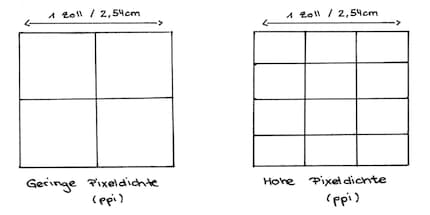
In the discussion about resolution, Hans Kiening, an engineer for cinema technology, published a dissertation in which he states that the minimum dot pitch between two infinitesimally small but luminous pixels must be at least 0.3 mm at a sitting distance of one metre in order to still be perceived as such by the eye (page 28 in the PDF linked above).
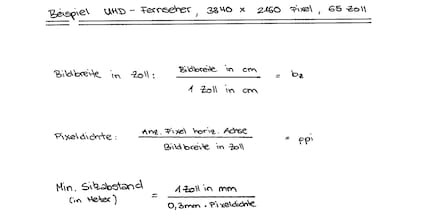
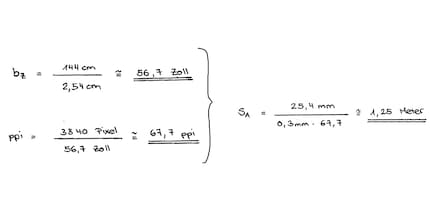
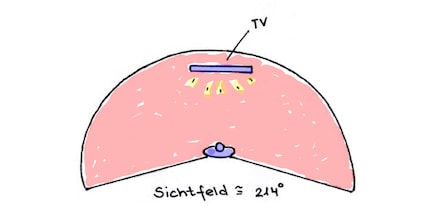
The industry has not yet managed to agree on a single, standardised calculation method. Depending on who you ask, you'll get a different recommendation. The most commonly cited are those from retailers - information that sales platforms such as digitec receive from manufacturers -, those from the Society of Motion Picture and Television Engineers - SMPTE for short - and those from THX. What they all have in common is that the distance is specified in angular degrees (viewing angle). Both SMPTE and THX do not differentiate between Full HD and Ultra HD in their standards.
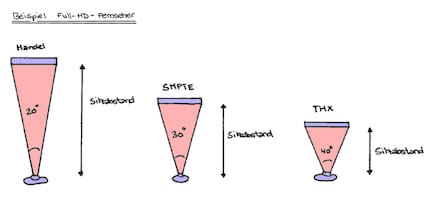
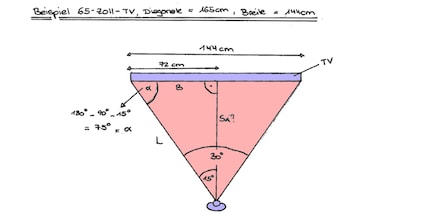
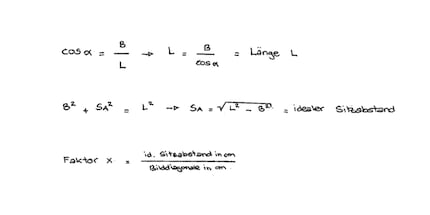
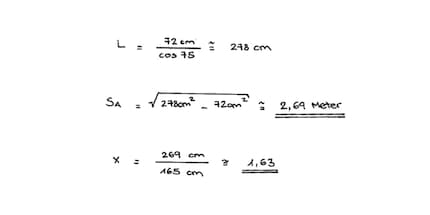
| Blickwinkel Full HD | Faktor Full HD | Blickwinkel Ultra HD | Faktor Ultra HD | |
|---|---|---|---|---|
| Handel | 20 Grad | 2.5 | 30 Grad | 1.63 |
| SMPTE | 30 Grad | 1.63 | 30 Grad | 1.63 |
| THX | 40 Grad | 1.2 | 40 Grad | 1.2 |
What the latter often forget is that we are talking about a science in the micro and macrometre range, light waves and distances in minutes of arc: The human eye has between 100 and 130 million receptors, which determine the resolution of the environment. The receptors are divided into rods - for twilight and night vision - and cones, which, like subpixels in a pixel, are responsible for the perception of the colours blue, green and red.